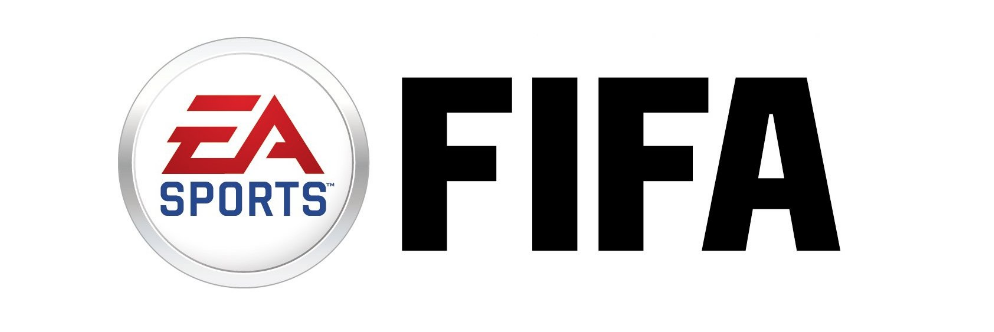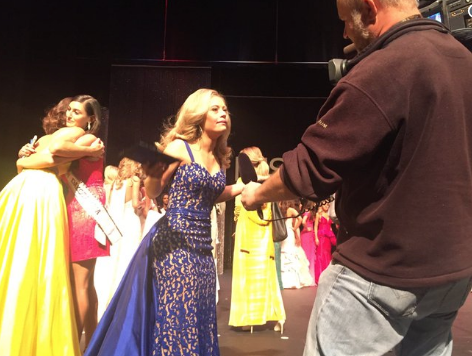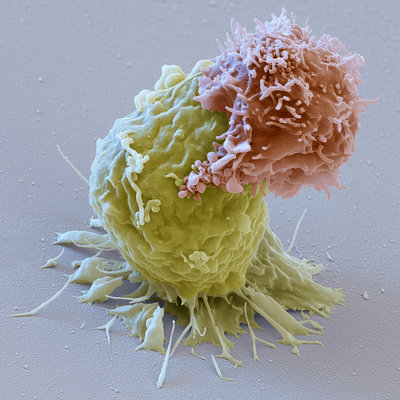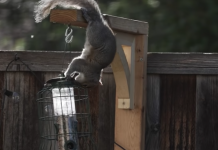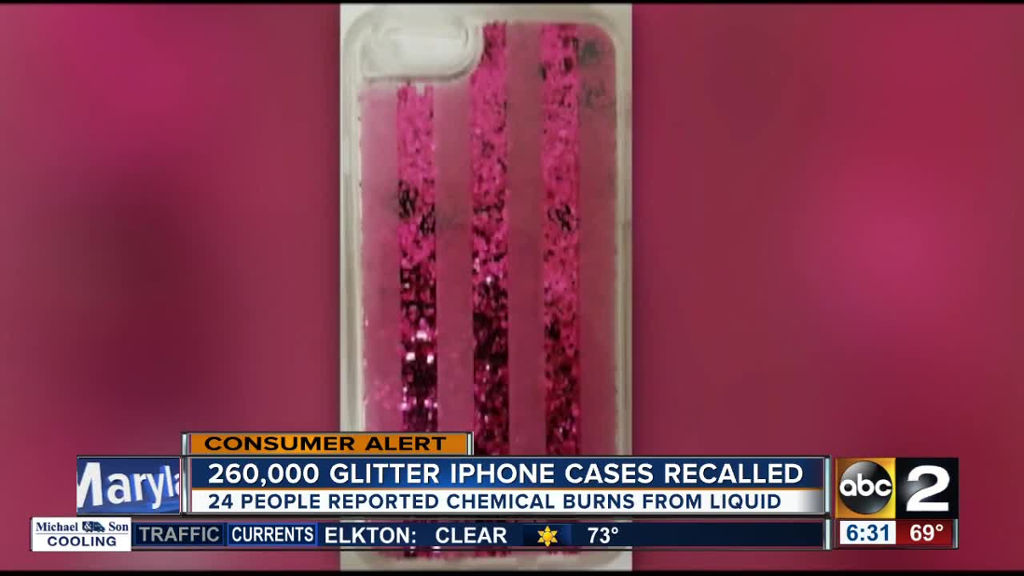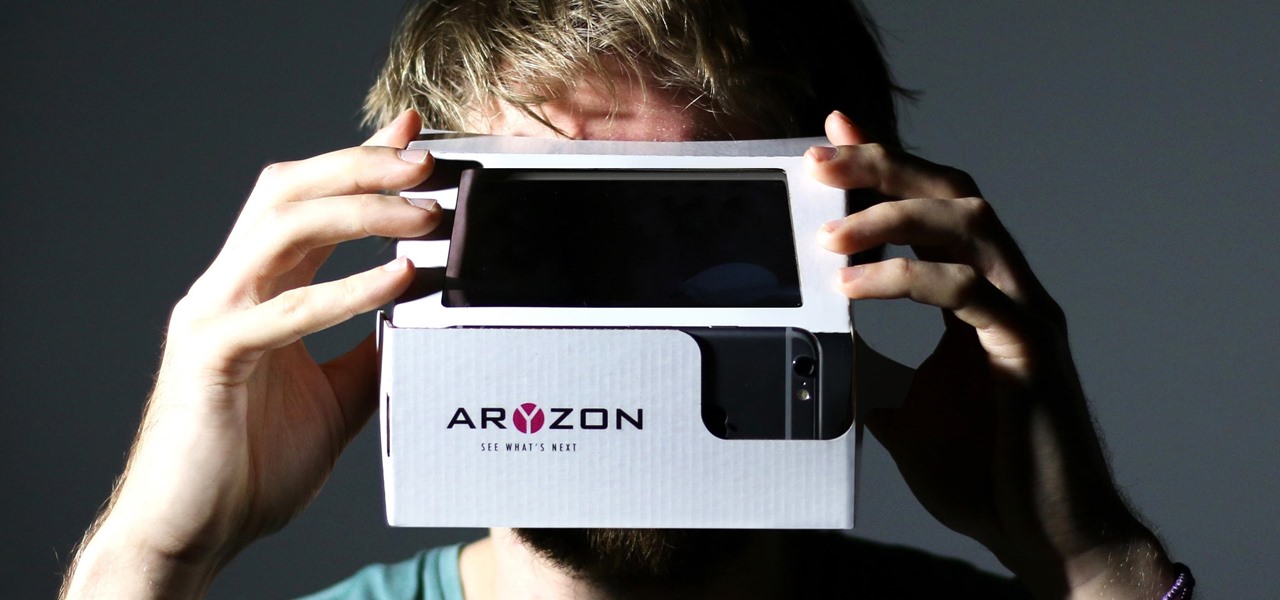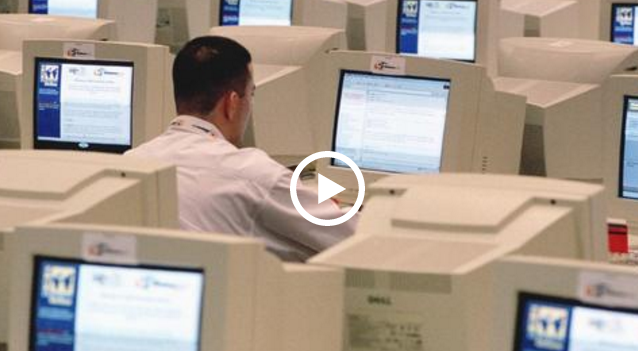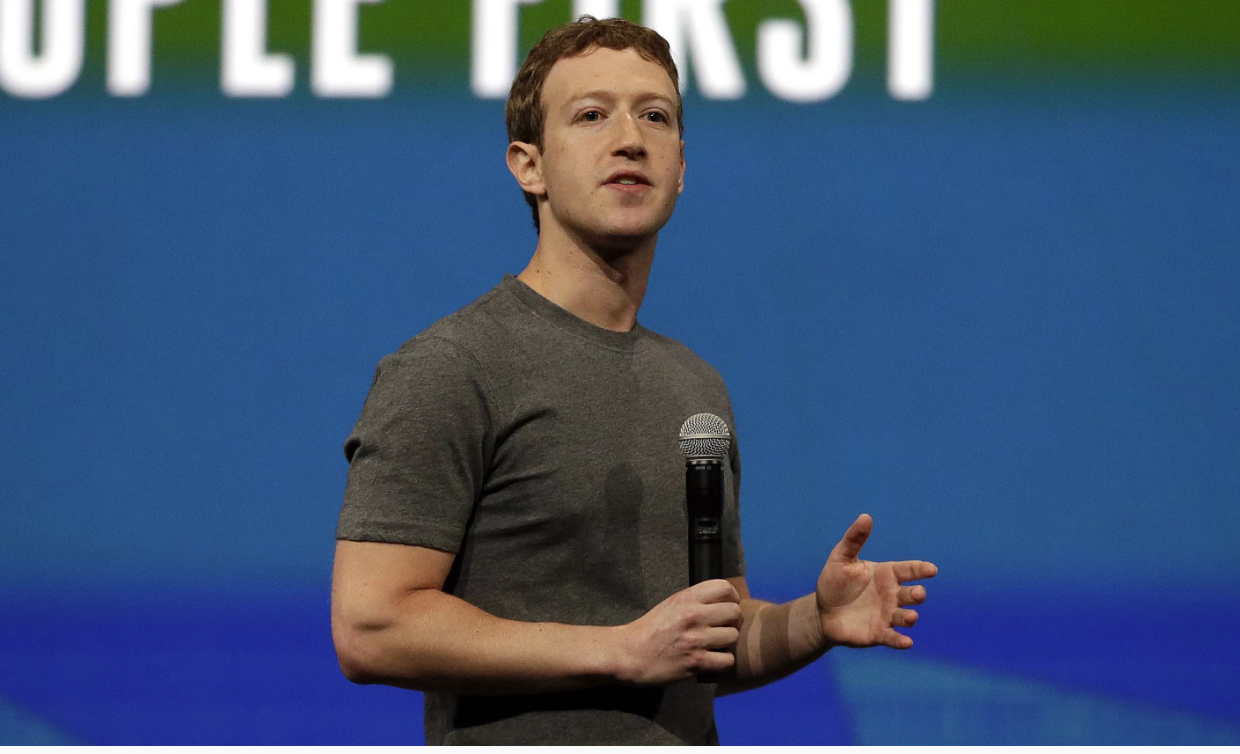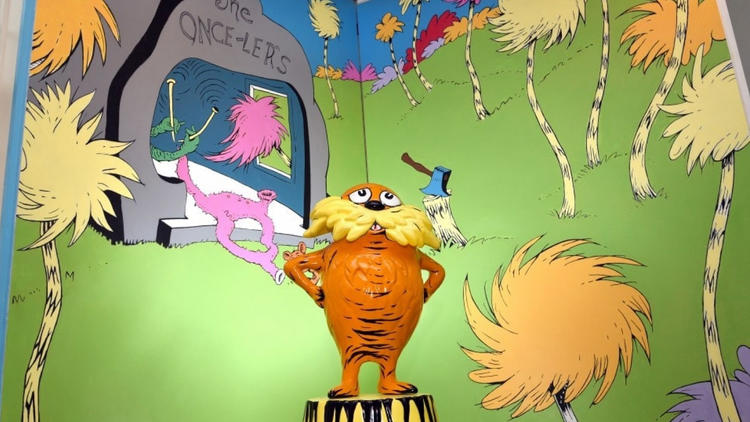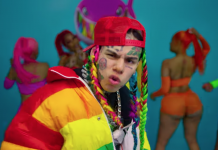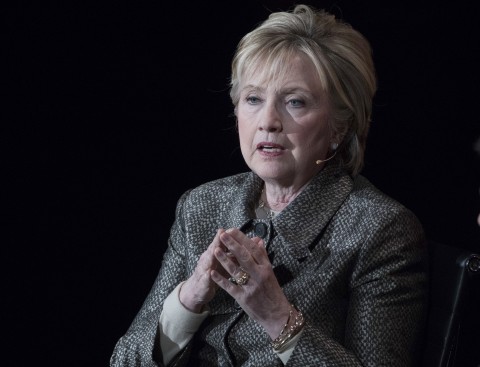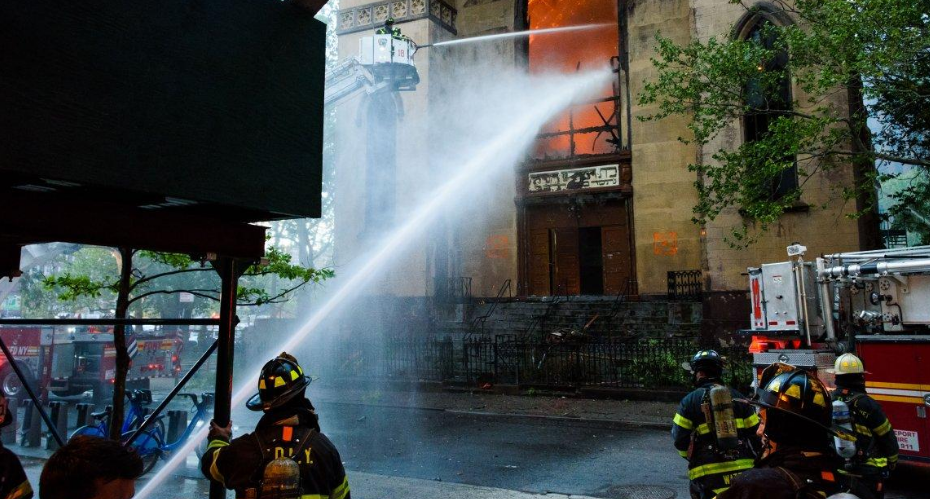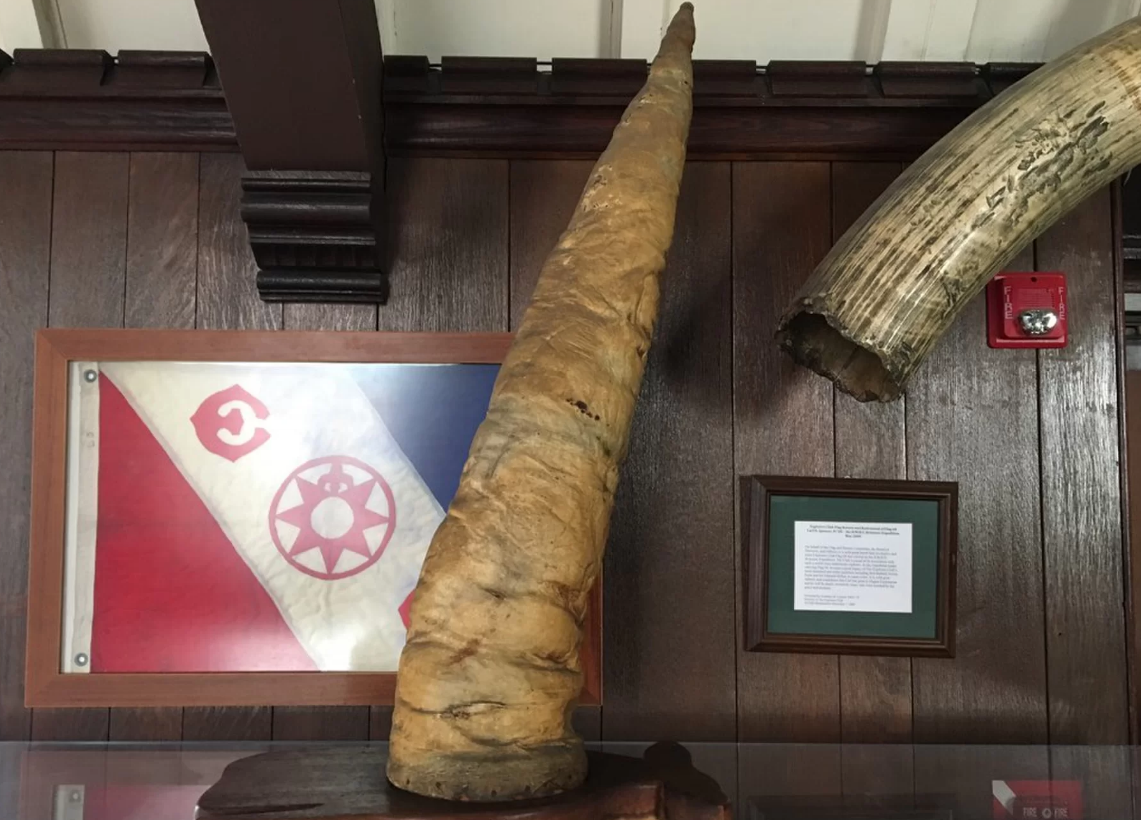controversial mural at the Amazing World of Dr. Seuss Museum in Massachusetts will be replaced after several children’s authors complained that it promoted racial stereotypes — and that they were boycotting an upcoming festival at the newly opened museum because of it.
The authors — including Mo Willems, the Caldecott-winning writer and illustrator behind the popular Pigeon and Knuffle Bunny books — issued a joint letter Thursday saying they were skipping the upcoming Children’s Literature Festival in Springfield, Massachusetts.
Willems, Lisa Yee (“Super Hero Girls”) and Mike Curato (“Little Elliott”) said the mural, which illustrates a scene from Theodor Geisel’s “And to Think That I Saw It on Mulberry Street,” includes a “jarring racial stereotype of a Chinese man who is depicted with chopsticks, a pointed hat and slanted slit eyes.” The authors called the caricature “deeply hurtful.”
Following the uproar, Dr. Seuss Enterprises, which oversees the author’s estate, said it would replace the mural with another image depicting another of Dr. Seuss’ stories.
“This is what Dr. Seuss would have wanted us to do,” according to a statement. “His later books, like ‘The Sneetches’ and ‘Horton Hears a Who,’ showed a great respect for fairness and diversity. Dr. Seuss would have loved to be a part of this dialogue for change. In fact, Ted Geisel himself said, ‘It’s not how you start that counts. It’s what you are at the finish.'”
Willems, Yee and Curato had been invited to appear at the festival on Oct. 14 at the Amazing World of Dr. Seuss Museum, which opened in June.
The event was described by the museum as “a day filled with books, costumed characters and famous authors.” But the three authors said they were skipping the festival after having learned about the mural’s racial stereotype.
“While this image may have been considered amusing to some when it was published 80 years ago, it is obviously offensive in 2017,” they wrote. “For some children who visit the museum, their only interaction with Asian representation might be that painting. For others, seeing themselves represented in such a stereotypical way may feed into internalized, even subconscious shame and humiliation. It is incumbent on our public institutions to present all races in a fair manner.
“Displaying imagery this offensive damages not only Asian American children, but also non-Asian kids who absorb this caricature and could associate it with all Asians or their Asian neighbors and classmates.”
The festival was later canceled.
The dust-up came amid a broader debate about how Dr. Seuss books — some of which depict old stereotypes — fit into an evolving culture.
That debate roared back into the spotlight last month after Melania Trump sent 10 Dr. Seuss books to a school in each state – and a librarian in Cambridge, Massachusetts, sent them back.
“Dr. Seuss’s illustrations are steeped in racist propaganda, caricatures, and harmful stereotypes,” librarian Liz Phipps Soeiro wrote in a letter.
As The Washington Post’s Rachel Chason reported, the librarian argued that rather than sending books to an elementary school in Cambridge, the first lady should have devoted resources to schools in “underfunded and underprivileged communities” that are “marginalized and maligned by policies put in place by Secretary of Education Betsy DeVos.”
Critics view DeVos, a billionaire who worked for decades to promote school choice, as one of the most anti-public-education secretaries in the department’s history.
In response, White House spokeswoman Stephanie Grisham said giving the books was part of the first lady’s effort to use her platform “to help as many children as she can.”
She added that “turning the gesture of sending young schoolchildren books into something divisive is unfortunate, but the first lady remains committed to her efforts on behalf of children everywhere.”
In their letter Thursday about the festival, Willems, Yee and Curato wrote:
“The career of Ted Geisel, writing as Dr. Seuss, is a story of growth, from accepting the baser racial stereotypes of the times in his early career, to challenging those divisive impulses with work that delighted his readers and changed the times. It was our hope that the administration of the new Seuss-ian institution would be able to take inspiration from Mr. Geisel’s journey and find creative ways to allow children of all backgrounds to feel welcomed (or, at the very least, provide context for this hurtful painting).”
The trio said they expressed their concerns to the museum — and “unfortunately, the administration replied that it was the responsibility of visitors to contextualize the oversized painting of the ‘Chinaman’ for their younger wards, not theirs.”
After the mural-replacement decision was announced by Seuss Enterprises, Willems, Yee and Curato applauded the news.
Officials at the museum had said they were looking for ways “to help guide parents and teachers in addressing this issue with children and pupils.”
They also said they requested a meeting with the authors to discuss the matter but were rebuffed.
In a letter sent to the authors, Kay Simpson, president of the Springfield Museums and Dr. Seuss National Memorial Sculpture Garden, wrote that the museum “contains unedited material by Dr. Seuss during his lifetime” and that “we do not alter or edit an artist’s work.”
“Dr. Seuss’s books taught life lessons, from being a faithful friend, to not discriminating based upon appearances, to keeping your promises,” Simpson wrote. “Dr. Seuss was a product of his era and his attitudes evolved over time.
“It is our hope that parents and teachers can use the evolution of Dr. Seuss … as a teachable moment for children in their charge.”
Dr. Seuss Enterprises said Thursday that Geisel, better known as Dr. Seuss, was “a man of his times. He was also a man who evolved with his times.”





